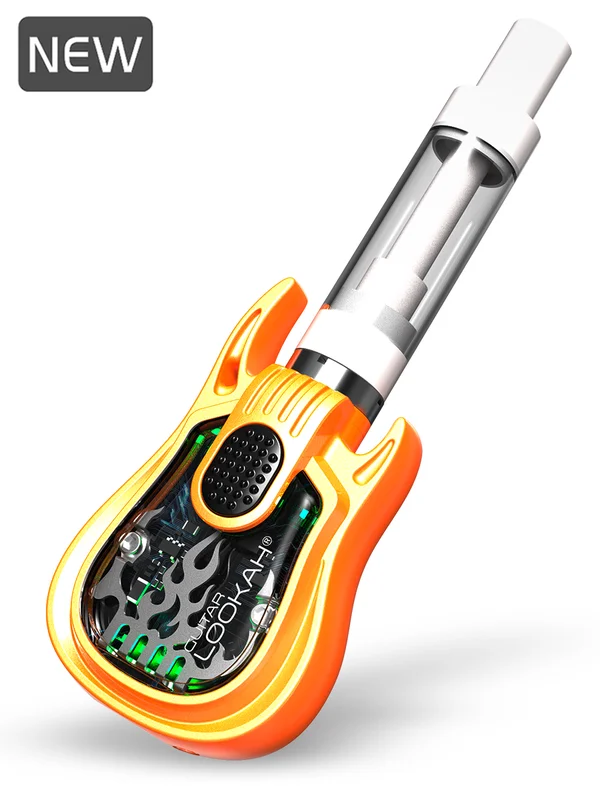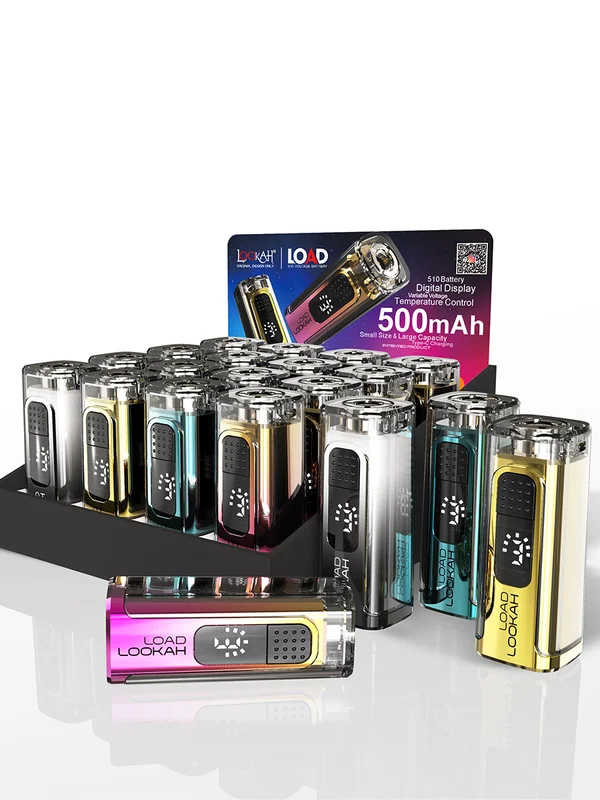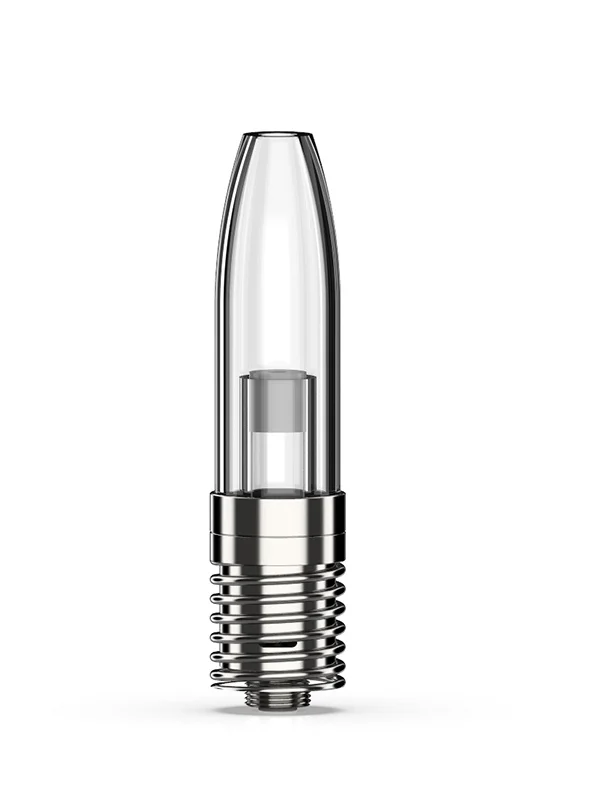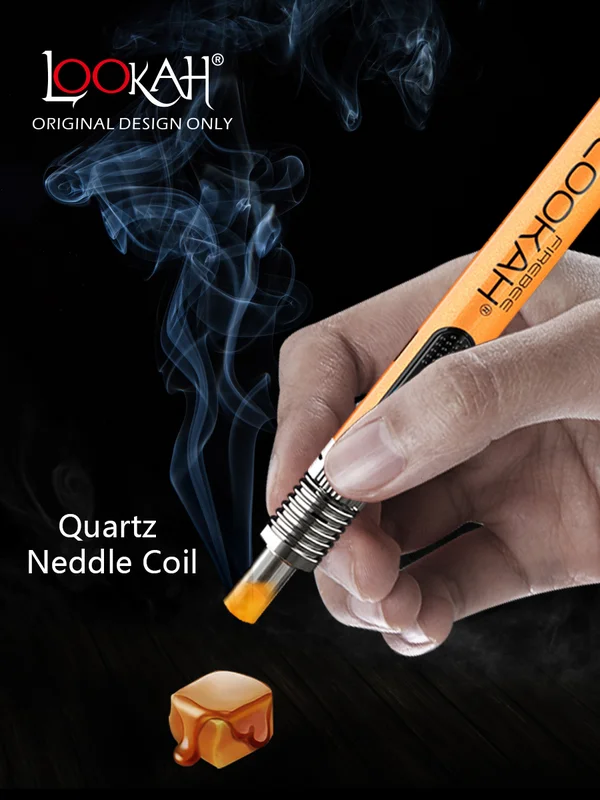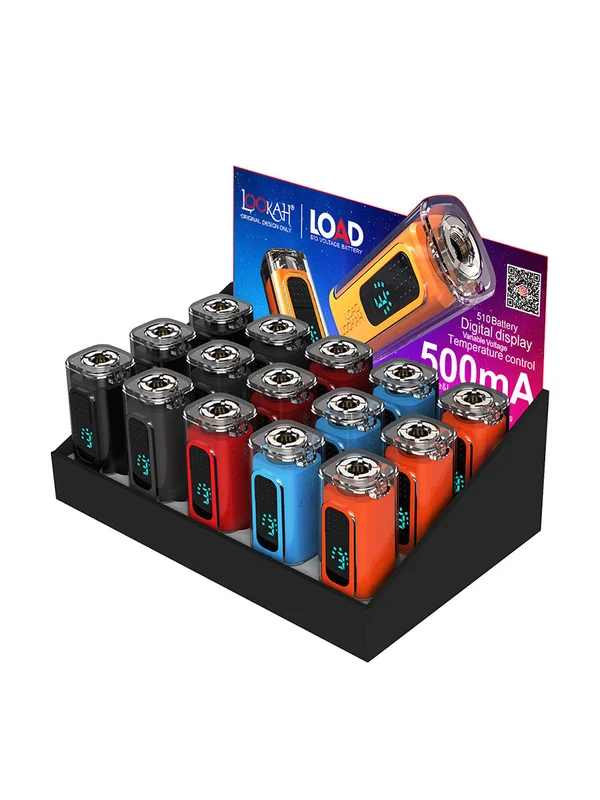510 Thread Battery for Vape Carts & Best Wax Dab Pen Batteries
Here are 3 common signs of a Faulty 510 Battery:
1. Inconsistent Performance
One of the first signs of a bad 510 battery is inconsistent performance.
If your vaporizer is not producing vapor as it used to or if you're noticing a significant drop in the quality of your vaping experience, it could be due to battery problems.
2. Trouble Charging
If your battery is not charging properly or if it takes longer to charge than usual, this is a clear indicator of an issue.
It's essential to check whether the problem lies with the charger or the battery itself.
3. OverHeating
Batteries that get unusually hot during use or charging could be failing.
Overheating is a serious concern that should not be ignored as it can lead to damage to your vaporizer or pose safety risks.
To clean the vape, remove the cartridge. Then, use a Q-tip dipped into isopropyl alcohol to wipe around the cartridge and vape pen thread.
Cleaning is essential because it prevents dirt and wax particles from causing issues. These particles can interrupt the connection or block the airway intakes. Regular cleaning is recommended to avoid these problems.
To keep your 510-thread pen battery clean, you should clean it once a week. If you use the device many times daily, you may need to clean it more.
Learning how to use a vape pen battery for 510-thread THC cartridges or wax atomizers is simple and only requires a few steps to get started.
Step 1: Charge the Battery
Before using a new 510 vape battery, it's crucial to charge it fully. Connect the battery to the charger and plug it into a power source.
Most 510 batteries come with an LED light indicator that will signal when the battery is fully charged.
Step 2: Attach the Cartridge
Once charged, you can screw your vape cartridge onto the battery.
Make sure not to overtighten, as this can damage the threads or cause connectivity issues.
Step 3: Adjust Voltage Settings
To turn on most 510 batteries, you'll typically click the power button five times rapidly.
Some batteries also offer variable voltage settings, which you can adjust by clicking the button three times.
Always start with the lowest setting and work your way up to find the perfect balance for your preference.
Step 4: Inhale and Enjoy
Press the device's power button and inhale gently. Take slow, controlled puffs, allowing the vapor to enter your lungs.
If you are using an auto-draw vape, Just put your lips on the mouthpiece and take a breath. The auto-draw feature will turn on the battery, heating the coil and creating vapor.
Higher voltage levels typically produce more vapor and a stronger, more immediate effect due to increased heat.
Conversely, lower voltage settings may preserve flavor and provide a smoother, more controlled experience.
The optimal voltage setting for Vape carts is somewhere between 3.0 and 3.8 volts, depending on your preferences.
Around this range, you'll likely find a balance that efficiently vaporizes the e-juice without overheating, preserving flavor.
Low (2.4V - 3.2V): Ideal for thinner liquids and for those who prefer a smoother, less intense vape.
Medium (3.3V - 3.8V): A balanced setting that works well for most e-liquids and provides a good mix of flavor and vapor production.
High (3.9V - 4.8V): Best for thick, high-viscosity oils and users looking for more substantial vapor clouds and a stronger hit.
Since 510 thread is an industry standard, you can find 510 batteries in any headshop or vapeshop.
In a local vapeshop, you can ensure the battery fits your cartridge and meets your aesthetic preferences. Also, you always get to try the 510 Thread Batteries with your cartridge in person before buying.
Besides, if you want more options, you can always try an online headshop like LOOKAH.
Then, you can choose one from a wide range of brands, models, and types, and the prices will probably be lower than those of your local vapeshop.
Are you having a difficult time getting your 510 vape pen battery to work? Is it not firing consistently or giving weak hits?
Here are some of the most common troubleshooting tips for getting your 510-vape pen battery working again.
1. Charge the Battery
If your 510-thread battery stops working, check that it is fully charged.
If not, Connect your battery to the charger and wait until it's fully charged before trying to use it again.
2. Check the Connection
If the connection isn't secure, your battery won't be able to heat the substance in the cartridge and produce a hit.
Make sure the cartridge is attached firmly to the battery, but be careful not to over-tighten, as this can cause additional issues.
Additionally, Dirt in the connectors may cause your 510 thread vapes to become inoperable as it reduces conductivity.
Remove the cartridge and clean around the thread and contacts on the cartridge.
3. Check the Compatibility
If a cartridge isn't recognized or working on the vape device, check that it is compatible.
Not all devices use the same standard 510 threads on their oil cartridges and batteries.
Some cartridges with lower Ohms need a higher wattage to work. This wattage could exceed the device's power output.
4. Inspect the Battery
Examine your battery for any signs of damage, such as cracks or leaks.
If you find any, it's time to replace your battery. Damaged batteries can be dangerous and should not be used.
5. Check the Airflow Holes
Visually inspect the cartridge to determine if the airflow holes are clogged or if the mouthpiece is clogged.
Make sure that the air holes on your battery are not blocked by debris or your fingers. Clear air holes are essential for proper airflow, which is necessary for the device to function correctly.
Dab pens (aka wax pens) are portable vaping devices intended for wax concentrate use that are shaped like, well, a pen.
Dab pens often have 510-threaded design which means that you can use a normal 510 thread battery with them.
In terms of operation, dab pens will have a single button control from which the entirety of the battery function and features can be accesses and operated.
LOOKAH offers high-quality 510-thread batteries that are compatible with most pre-filled oil vape pen carts, wax pen cartridges, essential oil vape pen carts, and delta 8 vape cartridges on the market.
The lifespan of a 510 thread battery depends on its capacity, how often it's used, and the voltage settings.
Typically, a fully charged battery can last for hundreds of puffs before needing to be recharged.
Factors influencing battery life:
Capacity (mAh): A battery with a higher mAh rating will generally last longer between charges than one with a lower rating.
Voltage Settings: Higher voltage or wattage settings consume more power and may reduce battery life.
Usage Frequency: Frequent use will deplete the battery more quickly.
Depending on the battery size and type, your wax vaporizer will charge in about 30 minutes to 2 hours or more via a USB port plugged into a computer or other charging device.
Typically, a mid-sized wax pen battery (500-900mAh) takes 1-2 hours to charge, while a larger mod (over 2000mAh) could take 3-4 hours or more.







